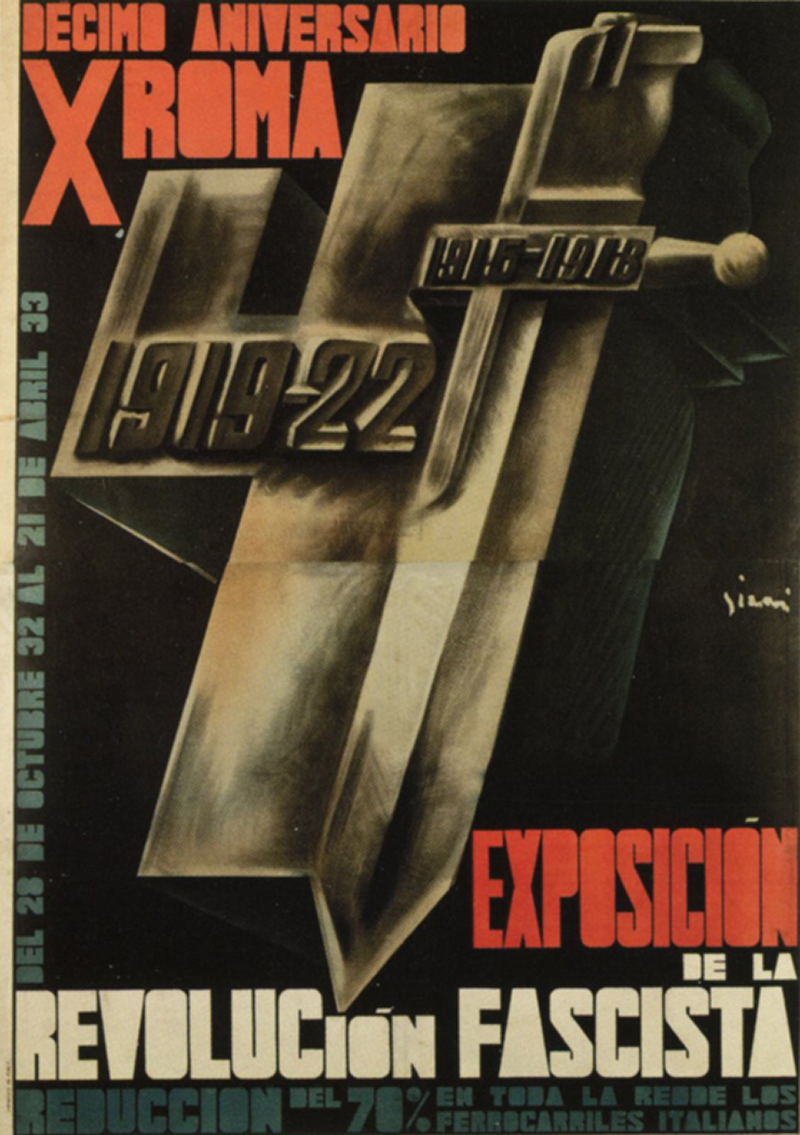
The Italian painter and illustrator Mario Sironi (1885-1961), a devoted Fascist, falls into a category that I refer to as “when bad things are done by good designers.” Which begs the question, should Sironi’s life be judged harshly for choosing to make art on the wrong side of history?
While recently in Rome, I came across an extensive catalog for the exhibition Mario Sironi and the illustrations for “Il Popolo d’ Italia” 1921-1940, curated by Fabio Benzi, with the historical consultancy of Monica Cioli, and the support of the Russo Gallery, which included 345 illustrations made by one of the greatest protagonists of 20th century Italian art for the official Fascist newspaper, magazine, and almanacs. I’ve known Sironi’s work and have long been interested in the role of artists like him in dubious ideological activity. This caused me to ponder whether or not there should be a statute of limitations on those who, ideologically speaking, made bad choices, yet were sincerely true to their convictions. With Fascism, its adherents were not simply dupes of a charismatic leader or populist rhetoric—arguably, through the benefit of hindsight, they aided in supporting a dictatorial state.
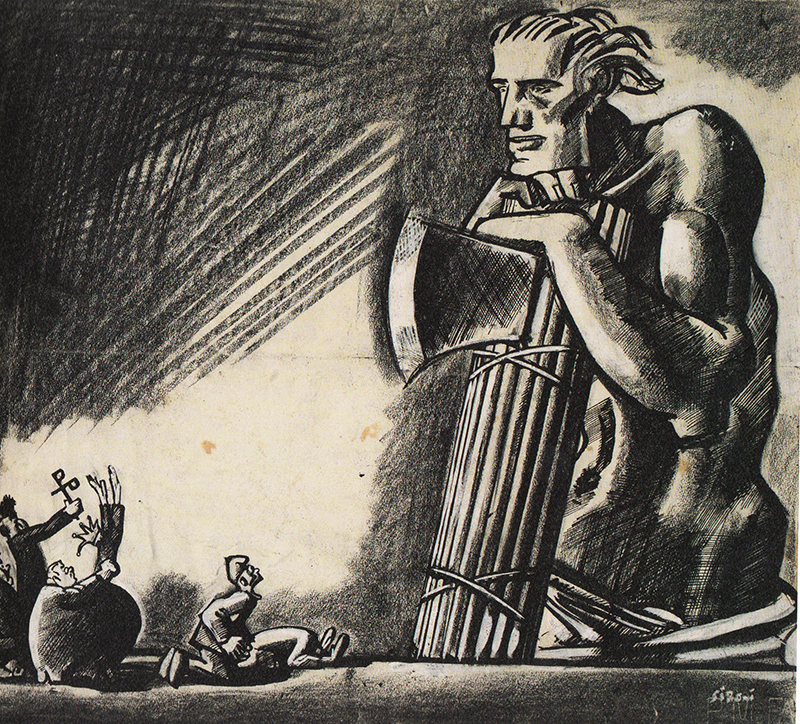
Sironi is a curious example of genius in the service of repression. A progressive artist who met the future Futurists, Giacomo Balla, Umberto Boccioni, and Gino Severini when they were students at the Free School of Via Ripetta, Sironi practiced the “Divisionist” style, the art of separating color into individual dots or strokes of pigment. This formed the technical basis for neo-impressionism. In addition, he organized art salons that included Futurist founder F.T. Marinetti, while at the same time created distinctive illustrations for La Lettura and Gli Avenimenti magazines that combined his personal approach with commercial art.
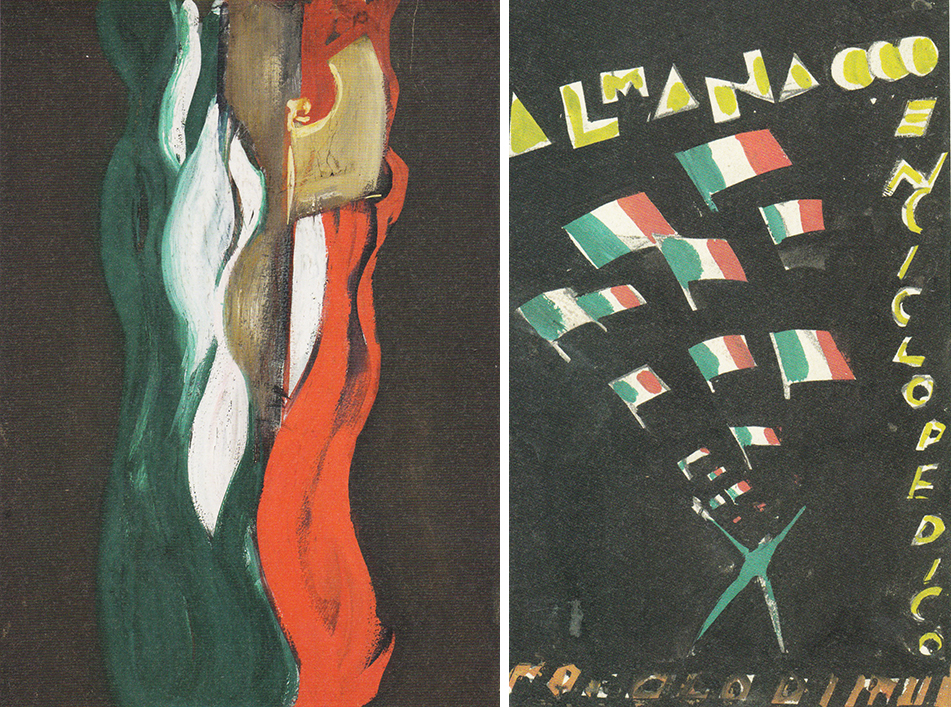
In 1913 he joined the Futurist movement, which Marinetti launched after publishing his 1909 “Futurist Manifesto.” In 1914 Sironi took part in the Esposizione libera futurista, then engaged in pro-war activities with the futuristic group and signed the manifesto L'orologlio italiano. In 1919, Sironi’s work was influenced by de Chirico’s Metaphysical art (representational yet incongruous imagery that influenced the Surrealists in the 1920s). As with other personal influences, however, Sironi did not slavishly follow the pack but developed a language of his own.
In 1920 he was a signatory of the Futurist manifesto Against all returns to painting. In 1922 he jumped even deeper into the avant garde, co-founding the group the seven painters of the Novecento, and joining forces with Margherita Sarfatti, an Italian journalist, art critic, patron, socialite, and propaganda adviser of the National Fascist Party of Benito Mussolini. Although this group did not have a theoretical base, they followed Sarfatti, who introduced politics to this art. Sironi was the most unique of all the members, with his strong formal synthesis in combination with a very rigorous spatial architectural construction.
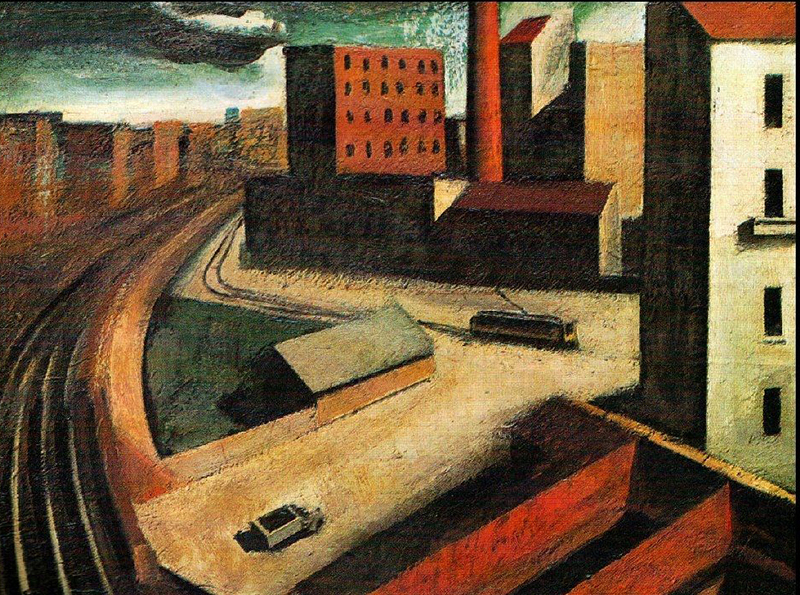
While his painting developed he continued as a ubiquitous illustrator. The Novecento group was presented at the XIV Venice Biennial; from this arose the idea of organizing a Prima Mostra of the Italian Novecento featuring art tied to Mussolini’s rhetoric. It was inaugurated in 1926, in Milan, with the participation of one hundred and forty artists. Sironi designed the manifesto. In 1929 the Seconda Mostra del Novecento Italiano was inaugurated and was exhibited in Berlin, Paris, Barcelona and elsewhere in Europe with Sironi as leader.
By 1931 Sironi was seeped in the passions of Fascism and produced, among other things, what might be described as Fascist/Modernism. His fame as a painter and sculptor was growing, partly owing to his talent, and partly his alliances with Fascists and Futurists.
In 1936 he received architectural and mural commissions including the design for the Fiat pavilion at the Milan Fair. Yet, it is through his illustration that Sironi was the leading interpreter of the Fascist ethos, “the new man” as one of the primary artists for Il Popolo d’Italia (“People of Italy”), a newspaper founded by Benito Mussolini, and a smartly illustrated color magazine, La Rivista Illustrata del Popolo d'Italia. Sironi made the Fascist image concrete.
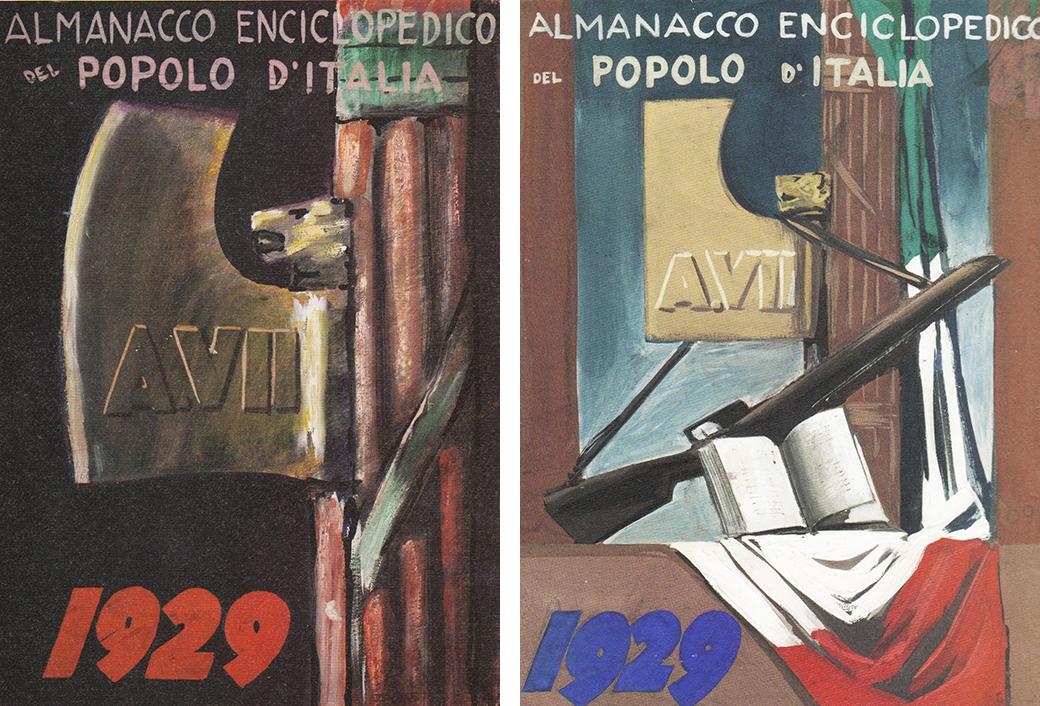
Il Popolo d’Italia became the information organ of the National Fascist Party until Mussolini suspended publication. In his illustrations Sironi created characters and situations that characterized the Fascist era. With their biting satire he targeted political issues, opposing parties, the old liberal governmental class, the pro-democracy press, the democracies of America, France, and England and, of course, Russian communism.
In the exhibition and catalog one sees one hundred works (selected from almost one thousand illustrations) created by one of the greatest exponents of Italian Fascist art. It’s a double edged view of an effective “political designer”—perhaps too effective. Whether for one side or the other, his aim was to propagate a political idea. Can he be condemned for supporting that idea? Or should his work, while viewed in the proper context, also be disconnected and viewed as art on its own terms? “In the illustrations for Il Popolo d’Italia,” wrote the curator of the exhibition Fabio Benzi, “it hits the infinite variety of compositional and iconographic themes, never repeated but instead reinvented daily, with a wealth of visionary and symbolic depth, transfiguring reality but deeply rooted in it; so as to constitute an absolutely unique unicum in the history of illustration,” and added that “political passion is inseparable from the artistic and aesthetics.” So how should he be considered by history and posterity?
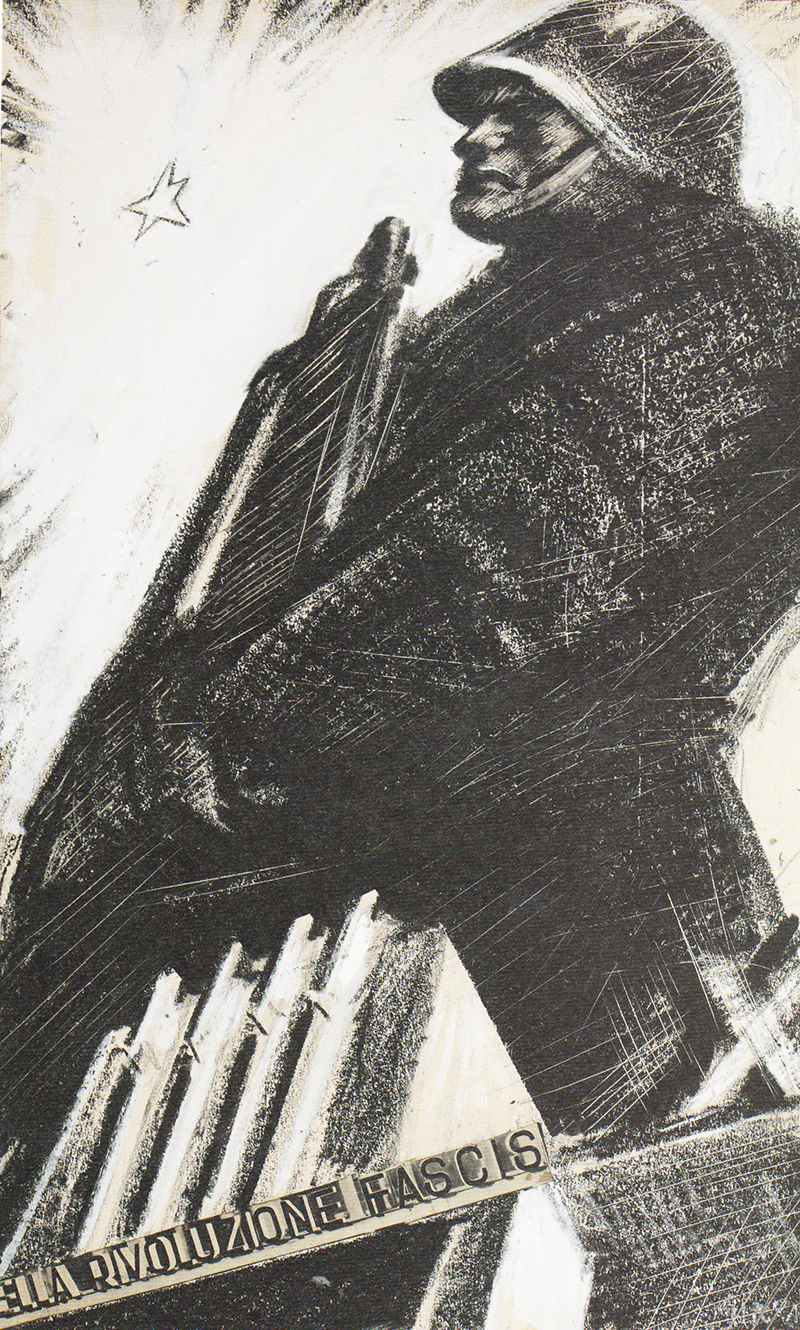
“Sironi’s profound participation in fascist ideas,” concludes Benzi, “led him to sublimate them in a monumental, imperturbable, and unquestionable style, contributing to set up a propaganda model also used in very banal and corrective ways.” That is one side of the coin. The other is that as an artist, Sironi was actually more than his content—similar, say, to Ezra Pound. Sironi’s work in total is, argues the curator, “meditation on man, which he represents in his most solemn or in any case more total sentiments: pensive, inspired, involved in the drama, perhaps desperate, but always reminiscent of his noble nature, aiming at the absolute.” I remain skeptical.
Sironi’s work from 1945 until his death in Milan in1961 grew out of a sense of political disillusionment and profound existential pessimism. With age (and defeat) comes wisdom, I suspect. The post-war years were devoted to “a spiritualized expressionism” and corrective sensibility. During the fifties he produced abstract works “born ideally from the elaboration of architectural friezes developed in the thirties, but now intended with an absolutely autonomous sense.” So is it fair to judge an artist by work produced during a particular era—a bad era? While reviewing Sironi’s work I could not entirely separate the motivations from the execution, while at the same time I could appreciate the execution for the success of his goal and the inimitability of his art and craft. Therein lies the paradox.
